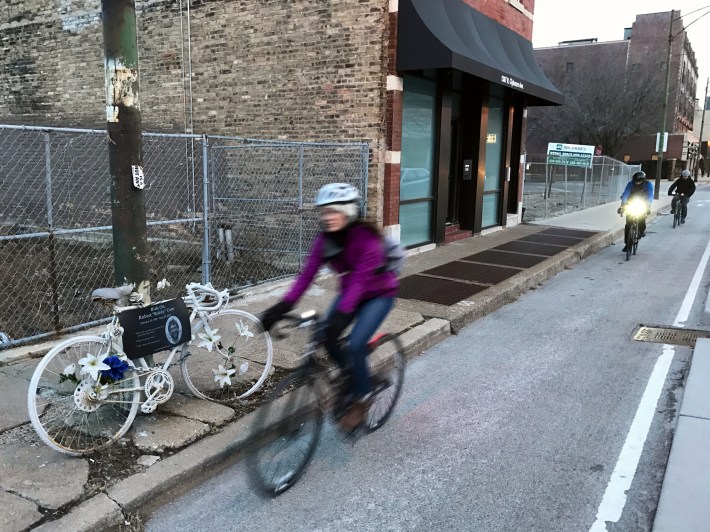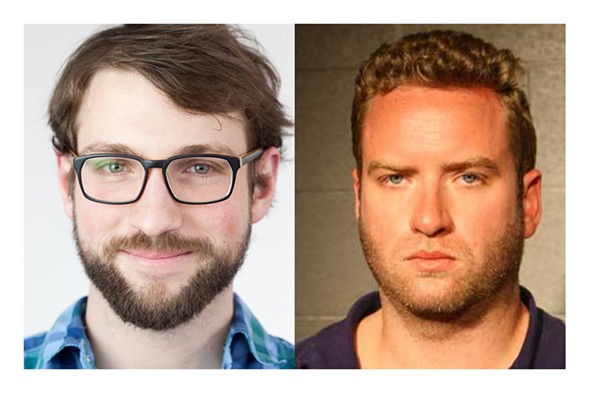[The Chicago Reader publishes a weekly transportation column written by Streetsblog Chicago editor John Greenfield. We syndicate a portion of the column on Streetsblog after it comes out online; you can read the remainder on the Reader’s website or in print.]
Ryne San Hamel, the motorist who killed cyclist Bobby Cann in a May 2013 crash while driving roughly twice the speed limit with a blood-alcohol level also about double the legal limit, was sentenced at a hearing in late January. After pleading guilty to reckless homicide and aggravated DUI but before being sentenced, San Hamel addressed Cann's family to provide a tearful—and graphic—account of trying to save the cyclist's life.
The driver's speech may have influenced Cook County circuit court judge William H. Hook's final sentencing decision. While the state-mandated minimum penalty for aggravated DUI resulting in a death is three to 14 years in prison, Hooks sentenced San Hamel to a mere ten days in jail, plus four years probation and $25,000 in restitution.
But bystanders who aided Cann in the aftermath of the crash now say that San Hamel exaggerated his own efforts, and allege that several statements he made in court were false.
San Hamel struck Cann at Clybourn and Larrabee at an estimated 60 mph; the impact severed Cann's leg and threw him onto the car's roof. When San Hamel swerved and then struck an oncoming car, the injured cyclist fell to the street.
Security video from a nearby restaurant shows that after coming to a stop in front of Yojimbo's Garage bike shop, San Hamel got out of his car and walked over to Cann. He was followed immediately by shop owner Marcus Moore, and soon afterward by Northwestern Memorial Hospital nurse Julie Rolf, who'd been driving southeast on Clybourn.
"I just wanted to let you know that I did everything I could . . . to help him," San Hamel said at the hearing, according to court records. "Cupping blood out of his mouth while the nurse did the tourniquet on his leg, and the last thing I did with assisting him was holding his hand and putting my other arm on his shoulder and just praying for him to come back."

San Hamel said that, as he prayed, Cann opened his eyes and looked at him, and then laid his head down to the side.
"At that moment when his eyes opened . . . he was going somewhere else and going to a better place," San Hamel told Cann's family. "I saw it in his eyes."
Although Cann's mother, Maria, later described San Hamel's speech as "offensive," his remarks seemed to make a good impression on Hooks. Just before announcing the sentence, the judge referred to San Hamel as a "victim of this situation" and told the courtroom that he had factored the driver's "remorse" into his sentencing decision.
There's just one problem: both Moore and Rolf say San Hamel's account of his actions wasn't true.
After reading my analysis of Hooks's judgment, Moore, a longtime acquaintance, contacted me to tell me that it was he, not San Hamel, who scooped blood out of Cann's mouth, and that there were other falsehoods in his story.
Cann had a weak pulse but wasn't breathing, Moore said. After securing the tourniquet, Rolf began chest compressions while Moore focused on clearing blood out of his mouth.
"I used my right forefinger and middle finger to scoop out the blood," he says. "It was pretty messy."
Moore used his left hand to support Cann's head, in an effort to his keep his air passage open. He insists that the driver's mention of cradling the cyclist's shoulder was false because while San Hamel was in the vicinity, he wasn't actively involved in trying to resuscitate Cann.
Read the rest of the article on the Chicago Readers website.




